Day 27 of #30days wild saw a quick trip to the nearby Tolls Meadow where I hoped to spot water voles. No luck on the vole front so to the background acoustics from the local whitethroat and chiffchaff I had a look a the plants and insects in the spirit of diversity. The plant that caught my attention was the local brambles as the flowers were alive with life. I captured a few of the local bees for IDing later.
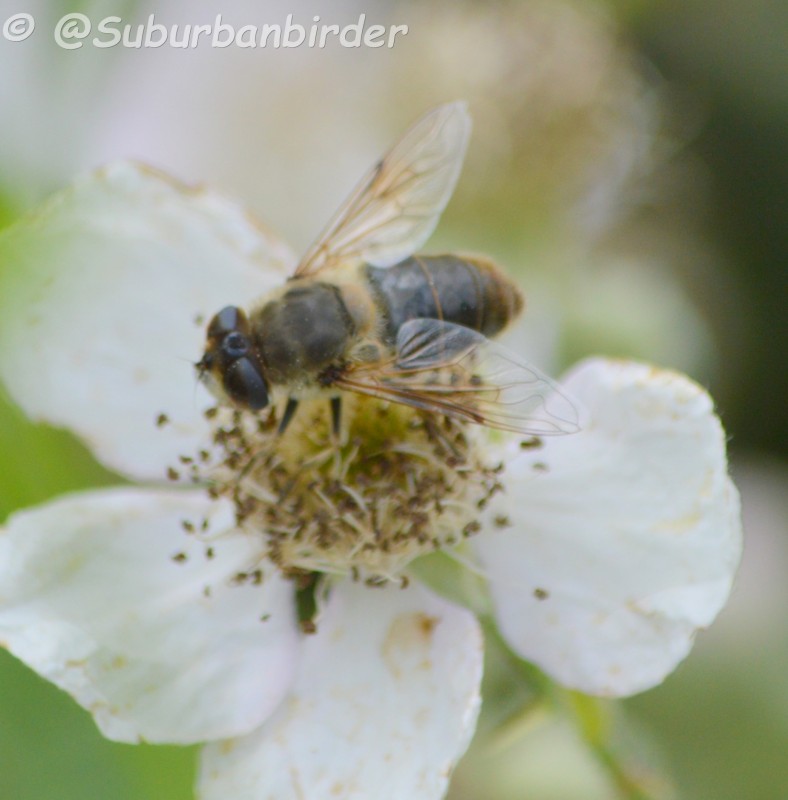
My first ‘bee’ was a little confusing thanks to thousands of years of evolution and turned out to be a drone fly who uses the bee look to avoid being eaten by some thing that doesn’t want to get stung. (click on the red drone fly text to find out more if you are interested)
The next one which wasn’t really any more photogenic was also on the brambles.

The real honey bee face-planted in the pollen and not as difficult to ID as once you are past the lookalikes there is only one western or European honeybee. Whether he is still European in another two years time is of course a whole other question. My next capture and comfortably the best of the day was a bit more furry.
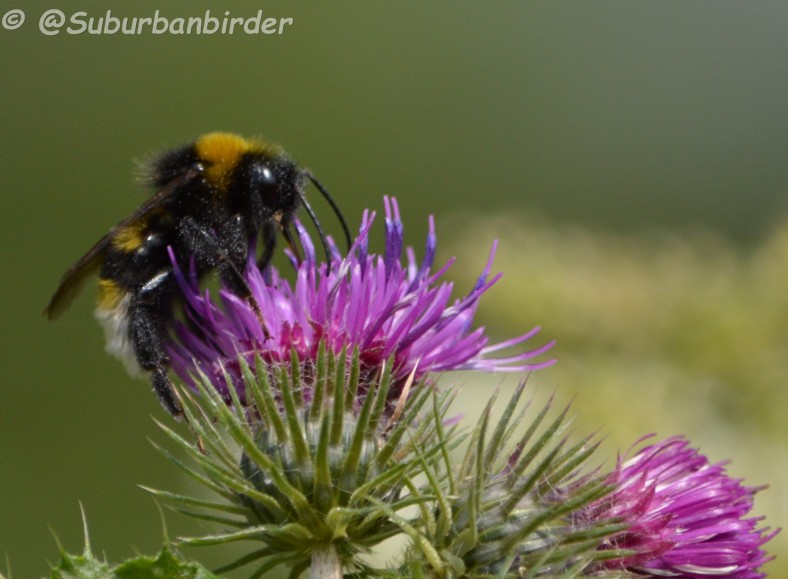
This is either a white tailed or garden bumble bee I await the advice of bee experts
Day 28 my wild June took me down to Hethersett hall lake in a gap between showers to see if there were any little grebes. I have seen quite a few great crested grebe chicks in the last week or so and thought it might have been a good opportunity. The mainstay of my brief visit was the three M’s mud midges and Moorhens but there was some company from more singing chiffchaffs, blackcaps and a party of foraging long-tailed tits.
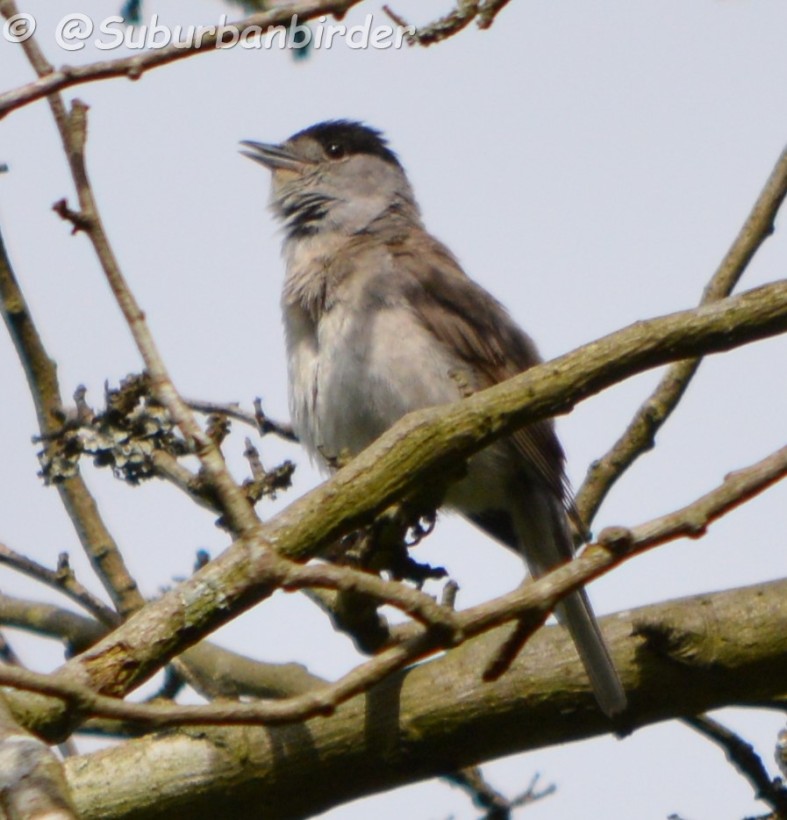
Closely cropped male Blackcap but at least a photo which you can tell what it is .
Day 29 of wild June started with a rare opportunity for a twitch with an early morning sighting reported on Breydon Water of a Caspian Tern. Terns are usually delicate little things, tiny compared with some gulls but the Caspian is a monster tern albeit that it maintains some of the arial grace of its smaller cousins. The high tide is usually the best time to see things at Breydon as when the tide rolls out they have miles of estuary and mudflats to choose from. Needless to say the tide was right out and I met a fullorn traveller who had come some distance and failed to see anything with his binoculars other than the occasional white blob. I set to work with my scope on some of the white blobs which turned out to be Black-headed gull, shelduck, avocet, lesser black-backed gull, little egret, Great black backed gull. Shortly after my luckess companion had left I picked out in the haze a big tern. A quick gallop along the sea wall and I finally got enough of a view to clinch the ID of this ‘lifer’. Thank heaven for a top of the range scope or it would have been consigned to the unidentified white blobs.
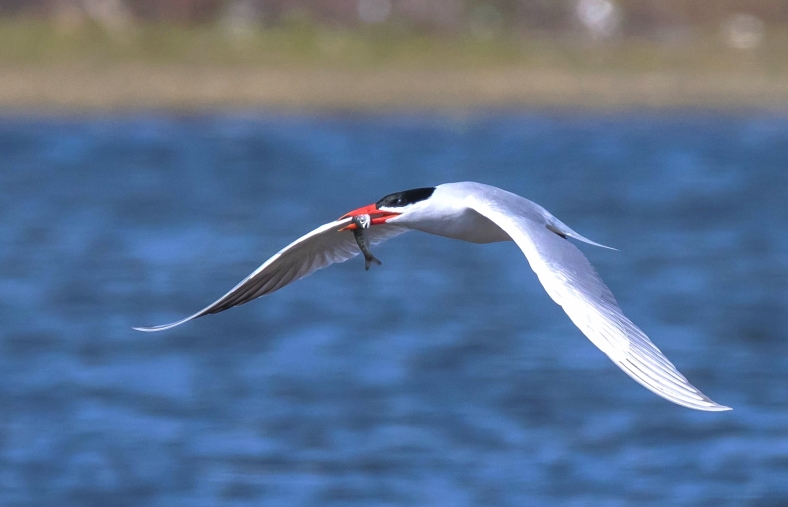
Not so distant Caspian Tern with its breakfast Credit: trak_mac via Compfight cc
Buoyed by my luck I had a quick visit to RSPB Strumpshaw which had had an early flypast by a bee-eater earlier in the morning. The bee eater was just a distant memory but I had great if again distant views of hunting Hobbies and Marsh harriers.
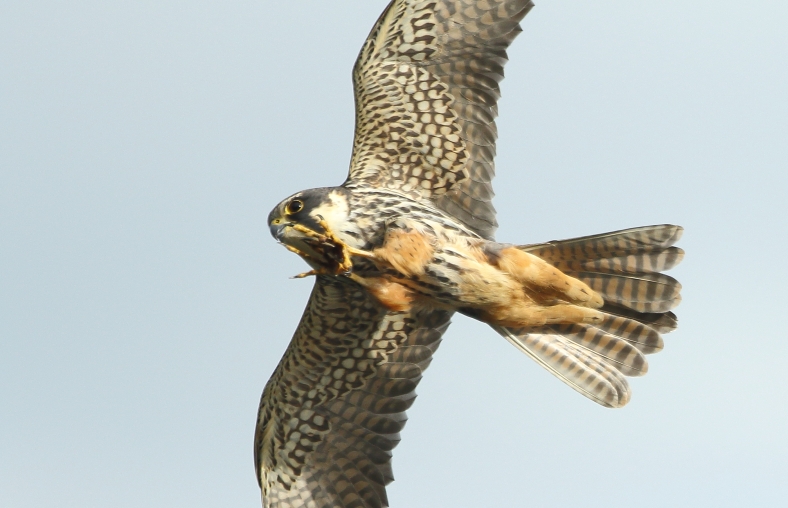
Not so Distant Hobby Credit: davecr24 via Compfight cc
As all the hobbies were dancing in the distance and other birds such as willow and reed warblers were singing in dense cover I busied my self snapping some Hobby food. I had intended to check out dragonflies on the meadow trail but it was a bit wet and blocked by some very hairy environment managers.
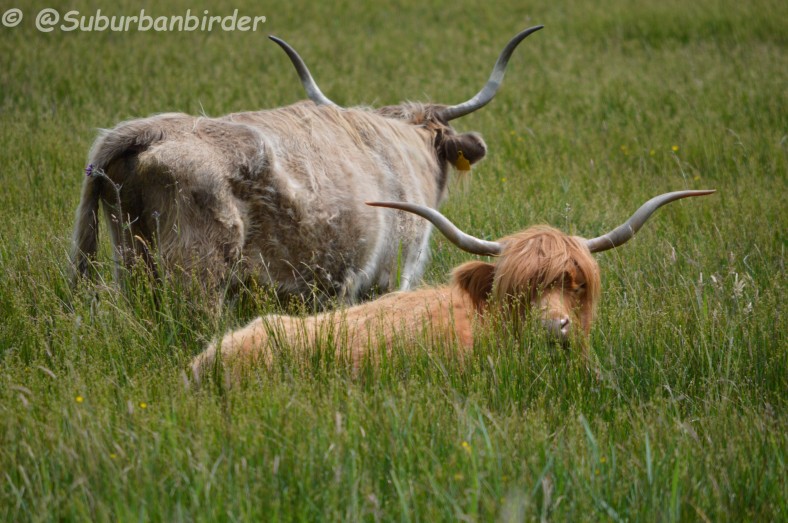
Never mind the haircuts they are valuable in terms of maintaining valuable habitats
Strumpshaw is rich in dragonflies which draws in the hungry hobbies and they buzz up and down the trails like little helicopters. I tried to grab some mobile shots but ended up settling for this one who had settled in the sun.
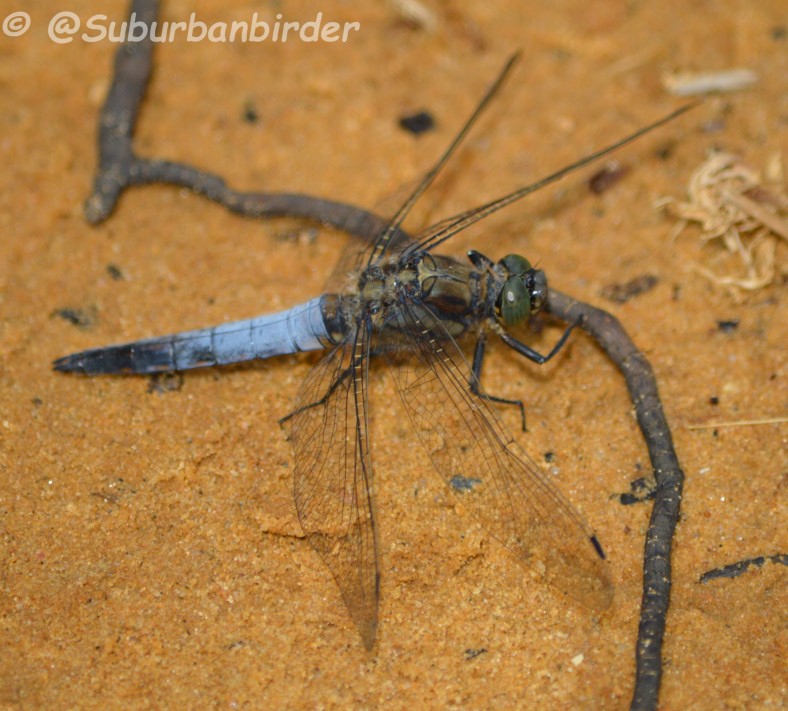
Male Black tailed Skimmer (other rarer varieties of skimmers are available).
Strumpshaw was relatively quiet for the short time I spent there and other than moorhens and a few scruffy mallards in moult and a flypast grey heron most birds remained distant or elusive until I returned to the visitors centre where the naturally shy Jay was quite confiding. Another special moment in 30 days wild, who knows what the final day holds in store.
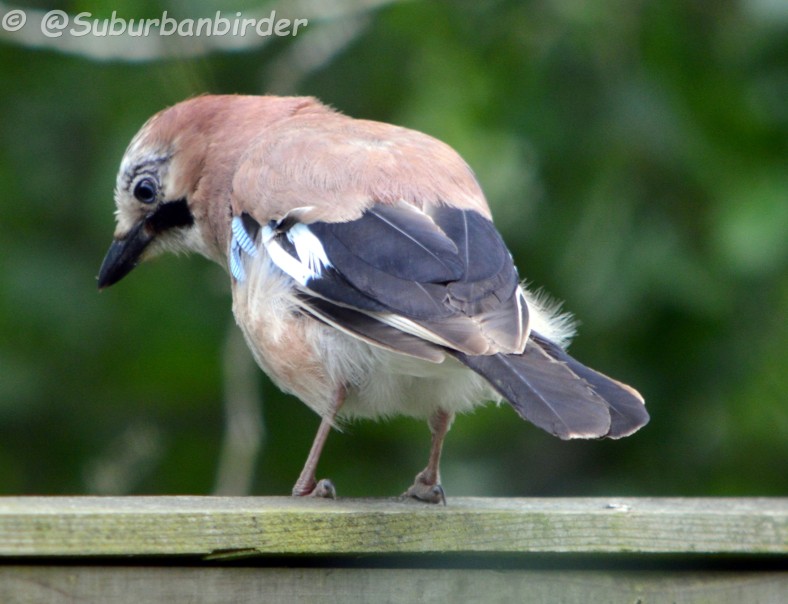
You do work hard. I loved your picture of the Highland cattle.
LikeLiked by 1 person
Yes this one took a bit of work may have to slow down in July
LikeLike